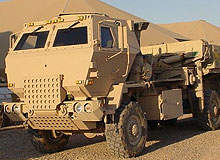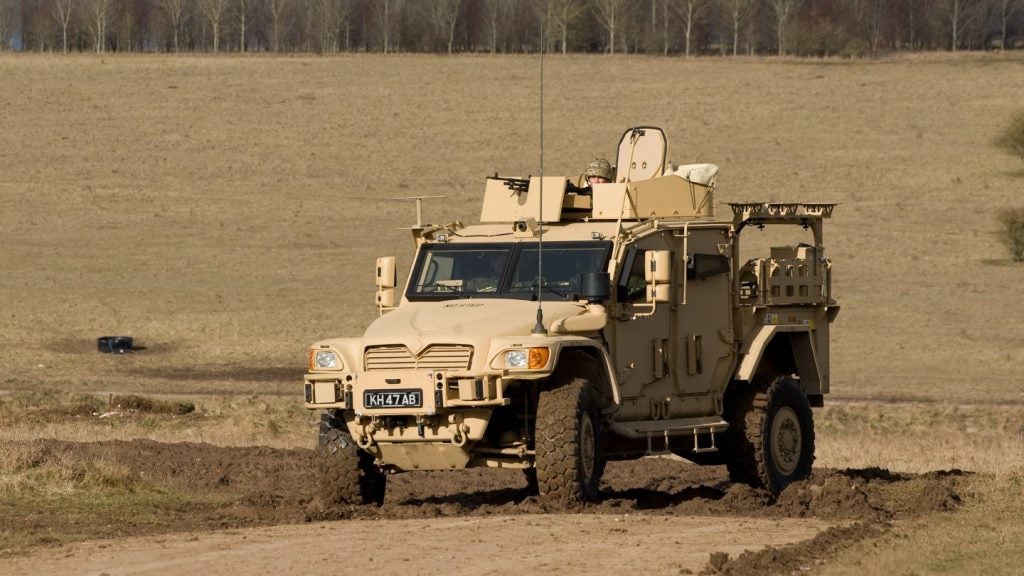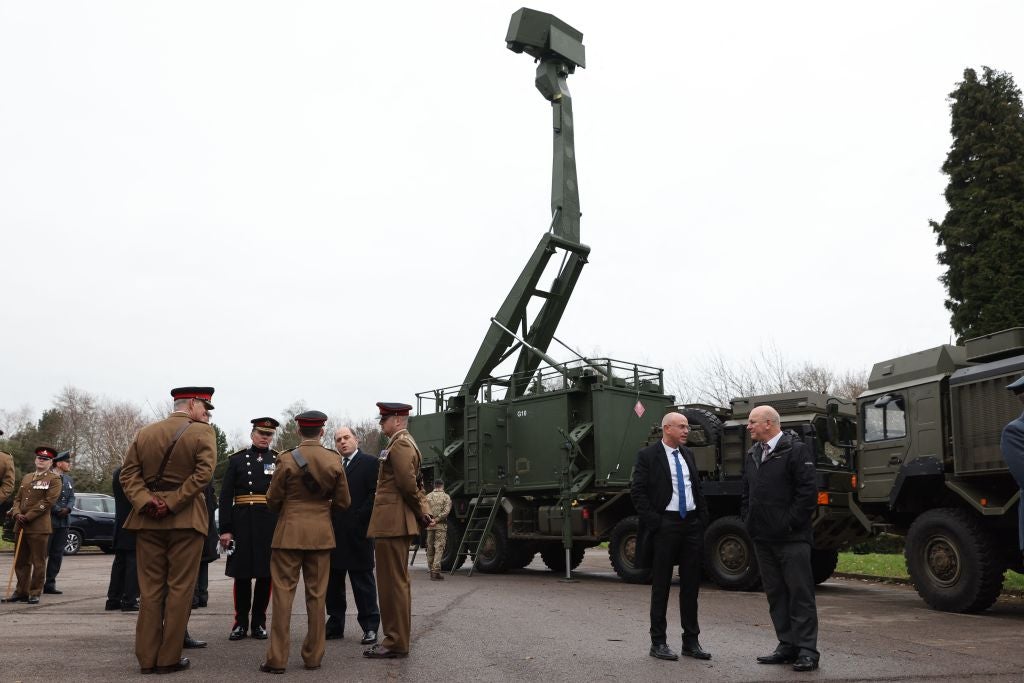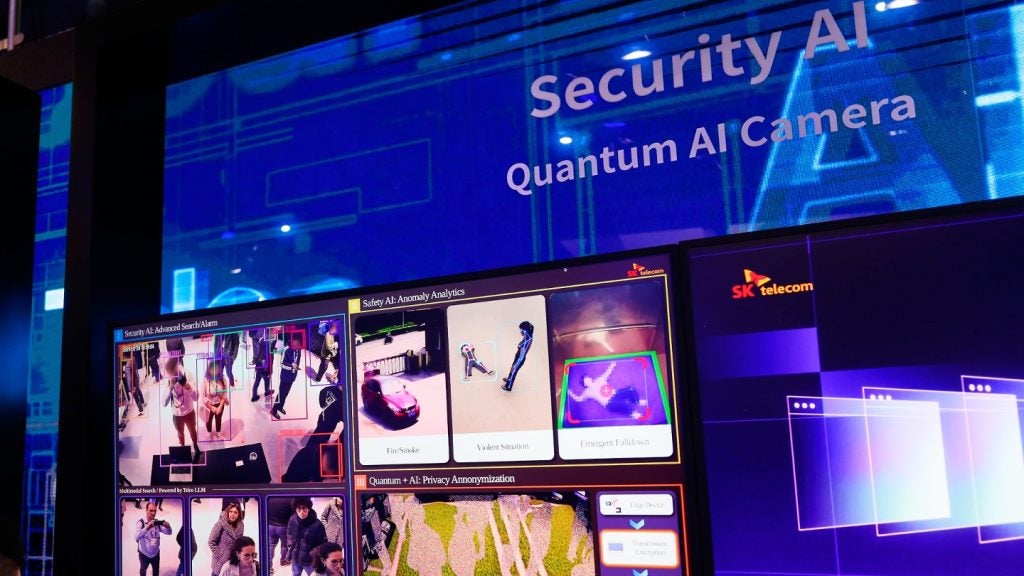
Land 121 (Overlander), Australia
The Land 121 (Overlander) project was designed to provide Australia’s military with field vehicles, modules and trailers (FVM&T) as well as associated support items that might be required in the future. At the moment, it’s the largest land project ever undertaken by the Australian Department of Defence and will deliver several thousand vehicles, modules and trailers over the next decade to Australia’s Defence Forces.
The FVM&T fleet will give all combat, combat support and combat service support organisations mobility on and off the battlefield. It transports personnel, munitions, replacement combat systems, fuel and critical supplies; evacuates casualties; and provides platforms and prime movers for command, control, communications, computer and intelligence systems, and numerous weapon systems.
Currently in the third of five phases, Land 121 is divided into light / lightweight capability, medium / heavy capability and trailer capability. Light / lightweight capability roll out is expected in 2011. Phase four will then procure around 1,300 light protected mobility vehicles.
Future combat vehicle programme, Canada
In the coming years, Canada will modernise its military at a cost of approximately C$5m for combat vehicles alone under the future combat vehicle programme. As well as maintaining 550 LAV III 8×8 infantry carriers, including additions to its weapon system and armour, three new types of vehicles will be procured.
How well do you really know your competitors?
Access the most comprehensive Company Profiles on the market, powered by GlobalData. Save hours of research. Gain competitive edge.

Thank you!
Your download email will arrive shortly
Not ready to buy yet? Download a free sample
We are confident about the unique quality of our Company Profiles. However, we want you to make the most beneficial decision for your business, so we offer a free sample that you can download by submitting the below form
By GlobalDataBetween 108 and 138 close-combat vehicles will be procured, each weighing between 25t and 45t. These will allow infantry groups to operate closely with the Canadian Leopard main battle tanks.
Another 500 to 600 tactical armoured patrol vehicle (TAPVs) are also on Canada’s wish list, which are to be procured in a general utility and RECCE versions. Between 13 and 18 force mobility enhancement vehicles will also be purchased.
Véhicule blindé de combat d’infanterie (VBCI), France
The véhicule blindé de combat d’infanterie (VBCI) has been developed by French companies GIAT and Renault trucks. The wheeled 8×8 armoured fighting vehicle (AFV) will replace the AMX-10P IFV in the French Army service. The army plans for 630 VBCIs to be delivered between 2008 and 2015 in two variants: 520 infantry fighting vehicles (IFV) and 110 command post vehicles (VCP).
The IFV is equipped with a manned turret with a GIAT 25mm M811dual-feed cannon, a 7.62mm coaxial machine gun, automatic fire control and enhanced night fighting capability. The VPC is equipped with a FN Herstal Arrows-300 class remote controlled weapon station mounting a 12.7mm machine gun.
The VBCI is operated by a crew of two (driver and gunner) and is powered by a 410kW diesel engine. It gives the vehicle with a combat weight of around 25t a top speed of 100km/h.
Armoured multipurpose vehicle, Germany
The German armoured multipurpose vehicle (AMPV) has been developed by German companies Krauss-Maffei Wegmann (KMW) and Rheinmetall Defence (RD). Different versions have been designed to meet the requirements of class 1 and 2 protected vehicles for the German Army’s new protected command and function vehicle (GFF) programme.
The vehicle cell of the 4×4 AMPV consists of a self-supporting steel hull with composite armour. Spall liners, reinforced flooring and cellular design will offer protection against mines and improvised explosive devices (IEDs), while add-on armour modules will supply extra ballistic protection. Among other features, the vehicles will have independent wheel suspension and the option for a remote-controlled weapon station.
The AMPV 2 is currently undergoing company trials. It weighs 7.3t and can carry a 2t payload. The AMPV 1, which is still under development, will be a 7.5t liaison vehicle. A conceptual study of a 5.3t version exists, which can be airlifted inside a CH-53 transport helicopter. Both versions are planned as patrol vehicles with an unprotected load space and as mission module carriers.
Leopard 2 A7+, Germany
This latest version of the Leopard main battle tank (MBT), presented at the Eurosatory 2010, has been optimised by its developers at German KMW for conventional military as well as urban operations.
The Leopard 2 A7+ is a modular upgrade package for the earlier Leopard 2 A4/A5/A6 standard MBT of which around 3,500 have been built so far. It uses the Rheinmetall 120mm L/55 smooth bore gun as its primary weapon and has a roof-mounted KMW FLW 200 remotely controlled weapon station armed with a 50mg and 76mm grenade launchers. It also has 360° situational awareness, and the commander, gunner and driver of the vehicle have enhanced thermal cameras. Inside it is air-conditioned and an auxiliary power unit allows main subsystems to run without the main engine.
For higher survivability, additional passive armour has been installed on the front and sides of the hull and turret. Belly armour is fitted as standard together with major internal changes to the hull and turret.
Puma infantry fighting vehicle, Germany
The Puma IFV has been developed by the German Projekt Systems and Management consortium, consisting of KMW and RD, to replace the current Marder IFV of the German Army. In June 2009, the German parliament approved the procurement of 405 vehicles, worth a total of €3bn.
The vehicle is operated by a crew of three (commander, gunner and driver) and can carry up to eight equipped troops. It is armed with a remote-controlled weapon station with a dual-feed Mauser 30mm mk30-2 cannon and a MG 4 machine gun. A Spike-LR fire-and-forget anti-tank missile system will also be integrated into the vehicles.
The Puma is powered with a new MTU density 892 series diesel engine with 800kW. The vehicles are built with an option for three levels of protection to suit operational requirements. These versions weigh 29.4t, 31.45t and 43t. The modular construction of these vehicles will allow them to be transported on the A400M aircraft.
Boxer multirole armoured vehicle (MRAV), Germany / the Netherlands
The Boxer multirole armoured vehicle (MRAV) has been developed by German-Dutch industrial group ARTEC GmbH, consisting of German KMW and RD and Dutch Stork. The wheeled 8×8 armoured vehicle will replace M113 and Fuchs Tpz 1 of the Germany Army and YPR and M577 vehicles of the Royal Netherlands Army.
Boxer is based on a new concept of interchangeable mission modules fitted onto common drive modules. The base vehicles operate independently and the modules are interchangeable within an hour. Currently, versions for APC, ambulance, command post, battle damage repair, armoured engineer vehicle, cargo vehicle, cargo/C2 and driver training exist. The units are air transportable.
Boxer can be equipped with reconfigurable settings to suit specific national requirements. German vehicles are to be armed with the KMW Type 1530 gun mount with 40mm automatic grenade launcher. Dutch vehicles may be fitted with the Thales Nederland Twister remote-controlled weapon station, which includes Albatross third-generation thermal imaging sight and Kongsberg Protector weapon control system.
The vehicles will be driven by a 530kW MTU engine and are able to withstand the explosion of an antitank mine under the chassis or the wheel as well as a medium-sized IED on the sides.
Sabra mkII main battle tank, Israel / Turkey
Over the last eight years, Israel Military Industries has been modernising 170 Turkish Army M-60 main battle tanks with its Sabra mkII upgrade package. The programme, worth about $700m, was finished this spring.
Originally outfitted with the 105mm gun, these new Sabra-type tanks feature a 120mm smooth-bore gun, similar to the one on Israel’s Merkava mk3.
The upgrade for Turkey includes an all-electric gun control system. It is equipped with a Knight computerised fire control system supplied by Electro-Optics Industries and Elbit Systems. The fire control system is integrated into the turret control and actively controls the turret dynamic.
The armour suite has also been enhanced with an advanced hybrid armour system. The modular passive armour protection is upgraded to explosive reactive armour in the Sabra mkII. The engine was exchanged against a more powerful MTU 1,000hp881 diesel engine with Renk 304 automatic transmission, allowing a maximum road speed of 55km/h.
Freccia veicolo blindato medi (VBM), Italy
The Freccia veicolo blindato medi (VBM) has been developed by the Italian Iveco-Oto Melara Consortium (CIO). The wheeled 8×8 medium armoured vehicle is based on the chassis of the consortium’s earlier Centauro tank destroyers. The Italian Army plans to deliver 249 of Freccia’s different versions (172 IFV, 36 anti-tank, 20 command and 21 mortar) by 2013.
The IFV variant features a manned turret with an Oerlikon KBA 25mm automatic cannon, a 7.62mm coaxial machine gun and two TOW missile launchers. Secondary armament consists of a pair of 7.62mm machine guns. The command version is fitted with an Oto Melara Hitrole 12.7mm turret and the mortar one with a Thales Defense Armament 2R2M striped 120mm mortar.
The Freccia is powered by a 382kW Iveco Diesel 6V supercharged engine, which gives the 26t vehicle a top speed of 110km/h.
So far six variants of the VBM Freccia are in production: armoured personal carrier, ATGW carrier, mortar carrier, command vehicle, armoured ambulance and recovery vehicle.
Light protected patrol vehicle, UK
The UK’s light protected patrol vehicle (LPPV) programme aims to provide UK forces with an initial batch of about 200 vehicles under an urgent operational requirement with an in-service date of early 2011.
The LPPV must be able to operate in desert conditions and urban environments. At the moment two teams are competing and have already delivered prototypes.
Force Protection Europe, a wholly owned subsidiary of Force Protection Industries, and Ricardo, a UK-based automotive engineering company, have developed the 4×4 7.5t Ocelot. It is modular built, with a V-shaped hull. With a two-man crew, up to four passengers and a payload of 1.5t, the Ocelot can be used in different versions: fire support; flat-bed; troop carrier; ambulance; and open-top vehicles.
British Supacat and British NP Aerospace developed the Supacat protected vehicle 400 (SPV 400). The 4×4 SPV 400 also has V-shaped hull and weight, payload, crew and passengers are the same as the Ocelot. It offers a composite crew pod, mine-blast seats and reconfigurable ballistic armour.
Future rapid effects system (FRES), UK
With its multi-billion-pound future rapid effects system (FRES) programme, the UK Ministry of Defence (MoD) aims to modernise its armoured vehicle fleet. As a first step it will buy 270 scout vehicles of the system (FRES-SV). Earlier this year, the MoD chose the UK division of General Dynamics with its ASCOD Scout vehicle to build these. The first vehicles are expected to enter service in about 2015, to replace the older Scimitars and Spartans.
The tracked vehicle is equipped with a CTA 40mm Case telescopic weapon system and powered by an MTU 600kW 8V engine. The vehicle’s gross weight is approximately 34t, but it has an upgrade potential of up to 42t.
Ground combat vehicle, US
The ongoing ground combat vehicle (GCV) programme is the US Army’s plan to modernise its armoured vehicles of the heavy and Stryker brigade combat teams. The programme is divided into three major phases: technology development, engineering and manufacturing design, and finally low-rate initial production.
The GCV will be the first vehicle designed right from the start to operate in an environment with mine and improvised explosive device (IED) threats. Key performance parameters for the vehicle include full-spectrum capability, net-readiness, and mobility. It should have the operational mobility of the Stryker, off-road mobility and side protection of the Bradley fighting vehicle and underbelly protection of the mine-resistant ambush-protected (MRAP) vehicle. The GCV is supposed to carry an infantry squad.
The army released a request for proposal for the ground combat vehicle at the end of February 2010. Three teams have entered the competition: BAE Systems / Northrop Grumman, General Dynamics / Lockheed Martin / Raytheon / MTU Detroit Diesel and SAIC / Boeing / KMW/RD. Up to three competitive contracts for the technology development phase will be awarded in late 2010. These will be about building and testing GCV technology demonstrator vehicles over a period of 27 months.
MRAP all-terrain vehicle (M-ATV), US
Considering recent combat experiences, the MRAP all-terrain vehicle (M-ATV) was developed by US company Oshkosh Defense as its answer to a tender of the US military. After winning the competition in June 2009, the company received orders for more than 8,000 M-ATVs.
The 4×4 vehicle uses super multihit armour technology with Plasan Sasa North America’s composite armour. With a 1.8t payload the vehicle weighs 14.7t and offers room for a driver, gunner and four passengers. It is powered by a Caterpillar 370hp C7 diesel engine. A weapon station with a machine gun can be installed on the roof.
The M-ATV is used in three variants besides the basic model. As a tactical ambulance it offers can carry two litters or four ambulatory patients. The SOCOM variant features a modified cargo deck with the rear storage accessible through an armoured cargo access hatch in the passenger capsule. A utility variant adds a flat-bed and is suitable for light cargo duties.
Joint light tactical vehicle (JLTV), US / Australia
The joint light tactical vehicle (JLTV) is a multiservice programme of the US and Australian military. It is supposed to lead to a next-generation tactical vehicle reaching 112km/h, withstanding roadside bombs and other threats, driving off-road and being airlifted beneath a CH-47 or CH-53 helicopter.
JLTVs will replace selected HMMWVs. At the moment, the US Army plans to buy 55,000 JLTVs and the US Marines, 5,500. Full production delivery of the vehicle is slated for 2015.
The US industry teams BAE / Navistar, Lockheed / BAE and General Tactical Vehicles have been selected for the ongoing 27-month technology development phase for the JLTV, for which each team has delivered seven prototypes. The design and build phase for this ended in May 2010.
There are three different JLTV variants. A four-person general purpose vehicle with a curb weight of 13t, 3.5t payload and 3.5t armour; a six-person infantry carrier with a curb weight of 15t, 4.5t payload and 4t armour; and a two-passenger utility vehicle with a short cab / open bed for hauling equipment or putting on shelters with a curb weight of 15t and a 5.1t payload.
The Australian vehicles will feature right-hand operation, but maintain 90% commonality and not exceed 20kg weight difference.






